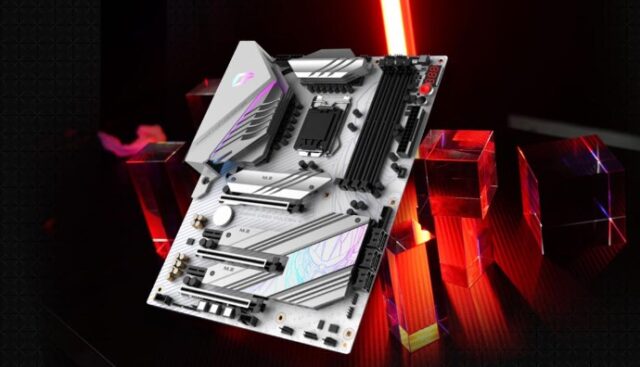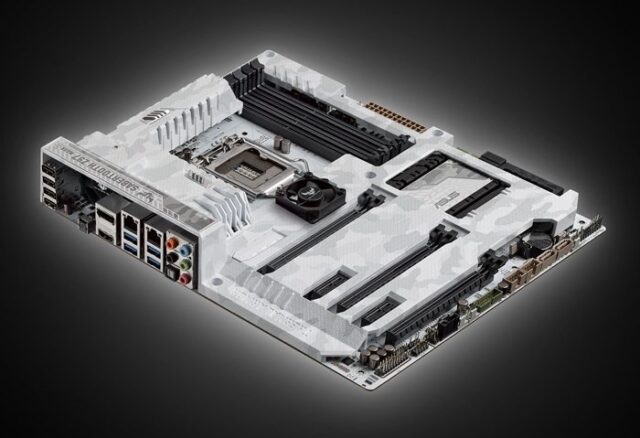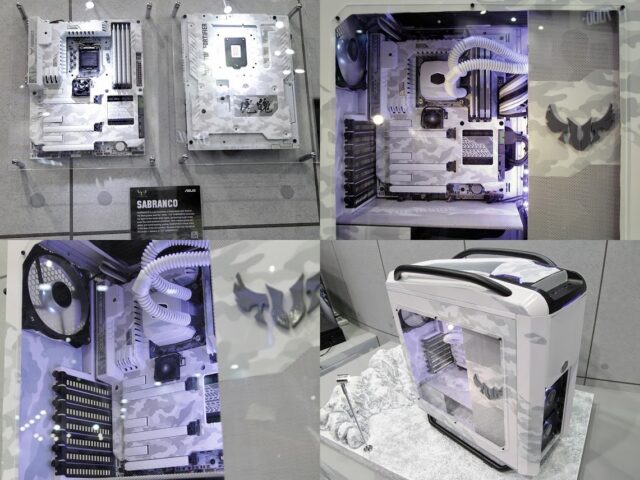
Are you on the hunt for the best motherboard to power your gaming PC? You’ve come to the right place! We’ll help you pick out an excellent white motherboard that will take your gaming experience to the next level.
With so many options, it’s tough to know which one is best for you – let us help you make an informed decision.
Benefits of White Motherboards for Gaming

White motherboards for gaming offer a number of advantages compared to traditional black or multicolored alternatives. One of the main benefits is aesthetic appeal, since white offers an eye-catching contrast in a predominantly black chassis. This also makes it easier to coordinate with other components, such as memory modules or graphics cards.
Besides enhancing visuals, white motherboards can also confer technical advantages. Their low-heat insulation can provide improved performance and overclocking ability, especially with multi-core processors. Moreover, due to the presence of extra layers and gaps between circuitry, they may be more resistant to electrical damage caused by surges. In addition to these features, the presence of mounting points makes them suitable for liquid cooling setups and some specialist mods such as RGB light strips.
Overall, smartly designed white motherboards offer both aesthetic customization and technical superiority for gamers looking for an edge over their rivals without sacrificing form over function. With this in mind, any serious enthusiast would find that investments into one of these quality units are more than worth it in the long run!
Factors to Consider When Choosing a White Motherboard for Gaming

When you’re ready to build your dream gaming PC, choosing the right components is essential. The motherboard is a core component of every computer system, and selecting one with the right features and performance is crucial to unlocking your system’s full potential. Visualize an elegant white color scheme for your PC by opting for a white motherboard. When selecting a white motherboard for gaming, there are several factors you should consider to make the best choice for your system.
-Form Factor: A motherboard’s dimensions can vary dramatically depending on its form factor, which will determine what type of case it’ll fit in. Many ATX (Advanced Technology eXtended) motherboards are designed with gamers in mind, as they typically offer more features and ports than smaller form factors like microATX or Mini-ITX. If you’re looking for maximum flexibility with room to expand later on, then opt for an ATX-sized board that’ll fit snugly inside an ATX tower case or larger mid-tower case.
-GPU Support: Gaming PCs rely heavily on discrete graphics cards from manufacturers like AMD and NVIDIA. Ensure that the motherboard has enough slots available to house multiple GPUs if desired–or at least an extra space enough from any other PCIe x16 device so that airflow isn’t hampered by overcrowded slots–so that additional expansion is possible in the future if needed. Crossfire and SLI support are also important features when considering multi-GPU setup compatibility requirements.
-Storage Options: M2 slots provide much faster data transfer speeds than SATA drives can offer, so look for motherboards that have space available even if you don’t require ultra high speed storage presently. Also consider how many SATA ports are available on the board; some boards may sacrifice SATA port availability in order to keep their product cost down or make more room for M2 slots instead; just remember than an excessive number of M2s could lead to thermal throttling woes down the line when running games off of these drives!
-Connectivity: One common underestimate when determining a suitable motherboard is its ability to deliver fast communication between components and peripherals–USB 3/3+ slots would need to be present at minimum here as well as plenty of USB 2/2+ options (as some older devices may require this). Look beyond both old and current external connection standards such as HDMI outputs too; WiFI adapters built into boards could also be worthwhile companions since fewer wires give better airflow through cases too!
Top White Motherboards for Gaming

White motherboards are becoming increasingly popular choices for gamers, offering high performance and aesthetic appeal. To ensure you are getting the best white motherboard for gaming, you should take into consideration factors such as your budget, what type of chipset your processor uses, and how many PCIe slots the board has.
The best white motherboards for gaming will have an Intel Z chipset or better on it. This will allow for Crossfire or SLI capability depending on your setup. You should also make sure you have enough PCIe slots to host multiple graphics cards as well as other components such as sound cards and RAID cards. The best boards will also come with additional features such as built-in WiFi and overclocking capability so that you can get the most out of your components.
When choosing a white motherboard for gaming, it’s important to make sure that it is compatible with all of your components (e.g., including any memory modules you may have) and that it has all of the necessary ports such as USB 3.0 and SATA ports (to connect storage drives). Additionally, some motherboards even come with RGB lighting options so that you can customize your rig’s looks even further!
Conclusion
In conclusion, there are a variety of white motherboards that are perfect for gaming. Depending on your budget and your specific needs, you can choose from several different options. There are motherboards to suit both budget shoppers and hardcore gamers alike.
We’ve discussed the specs of some of the best white motherboards currently available, so whichever brand you select you can be sure that it will be capable of providing the reliable performance and features needed for a successful gaming experience.












